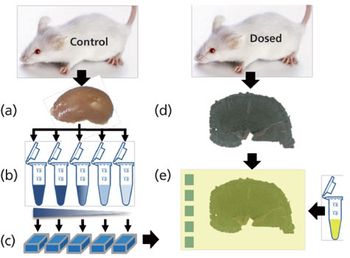
The main limitations of quantification using MALDI imaging are discussed and the different approaches used for quantitative measurement in MSI are evaluated.

The main limitations of quantification using MALDI imaging are discussed and the different approaches used for quantitative measurement in MSI are evaluated.
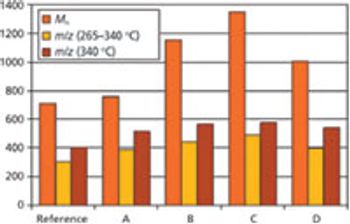
DIP–MS is a fast and easy tool that can identify classes of compounds in opportunity crudes (heavy and ultraheavy crude oils, asphaltenes, and tar sands) in the field, without prior separation or treatment. It may enable fast screening of real samples to make a rough evaluation of the potential of reservoirs and oil fields.

A brief historical overview of DMS, followed by a synopsis of the instrumentation, physics, and chemistry behind the separation principles
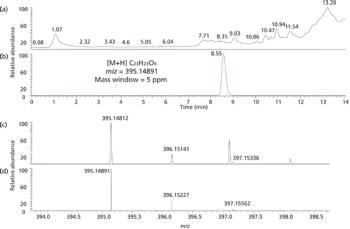
Here, the process to build an accurate mass database is thoroughly described and applications are commented on.

This article reports on the isolation, purification, and characterization of phorbol esters in Jatropha curcas seeds.
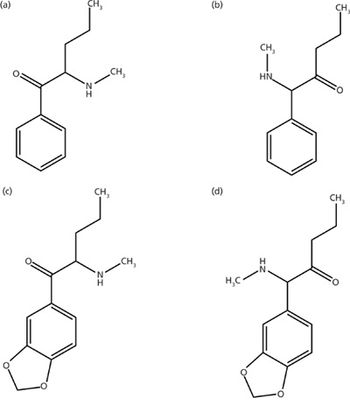
Gas chromatography–mass spectrometry (GC–MS) and liquid chromatography–mass spectrometry (LC–MS) techniques offer advantages in separating and confirming the identity of constituents in novel psychoactive substances.
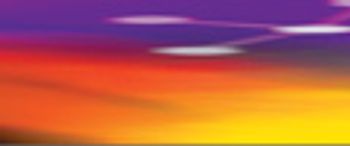
Ionization strategies and themes first developed in organic secondary ion mass spectrometry underlie many modern MS methods. Here's how it works.
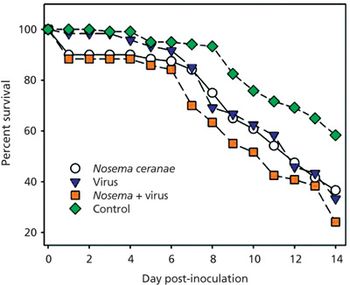
A study of colony collapse disorder in honey bees illustrates how mass spectrometry–based proteomics techniques can be used to to identify pathogens without any prior knowledge of what is contained in the sample.
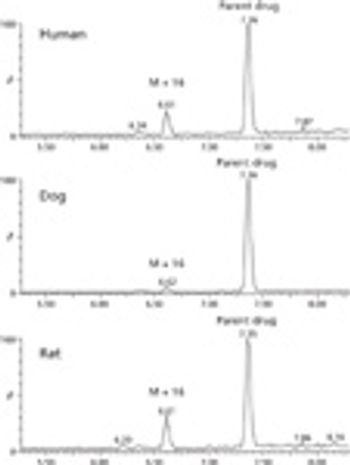
Accurate-mass approaches offer a significant advance over nominal-mass approaches in the arena of qualitative analysis, and some of the analytical approaches can now be conducted in a relatively routine manner.
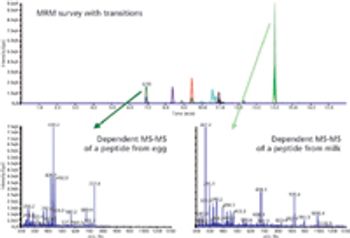
An update on the sample preparation and LC–MS-MS tools available for allergen detection, as well advantages of those techniques.

A proof-of-concept application for detecting abused steroids in urine samples collected from an antidoping surveillance program

Aspects of integrated data management specifically for mass spectrometric data are explored, including spectral dataset size, laboratory documents, and requirements for archiving and sharing research data.

The Faraday cup has been associated with mass spectrometry since the first instruments were assembled and continues to be used today. Here's how it works.
![Heinle Figure 1-[41825860]-{582380}_t-746093-1408611171135.gif](https://cdn.sanity.io/images/0vv8moc6/spectroscopy/309898def0ba4426d4cd28df126a523915eb3959-200x103.gif?w=350&fit=crop&auto=format)
How to create a liquid chromatography–tandem mass spectrometry (LC–MS-MS) system using mass spectrometers, a high performance liquid chromatography (HPLC) binary pump system, and an autosampler
![Huck_Fig 2-[41825010]-{584590}_t-746091-1408611176383.gif](https://cdn.sanity.io/images/0vv8moc6/spectroscopy/f6261c79607ac53f41c790ed011e5b2e0d4f0626-200x140.gif?w=350&fit=crop&auto=format)
A summary of the most recent advances in sample preparation, instrumentation, and data-processing techniques for MALDI-IMS
![Roy figure 5-[41827930]-{585410}-746090-1416910145798.gif](https://cdn.sanity.io/images/0vv8moc6/spectroscopy/5e8a7a8b42be4c1287e42a9e19c61a898804cfe5-700x592.gif?w=350&fit=crop&auto=format)
A discussion of active pharmaceutical ingredient (API) selection, drug product development, and mass spectrometry instrumentation
![Schug_Fig 3-[41827280]-{641210}_t-746095-1408611167666.jpg](https://cdn.sanity.io/images/0vv8moc6/spectroscopy/6da0479f1e71c57976064cc832407ebe8e770158-200x104.jpg?w=350&fit=crop&auto=format)
A review highlighting the combination, or potential combination, of various separation methods with ambient ionization mass spectrometry

Spectroscopy invites researchers to submit their work for publication.
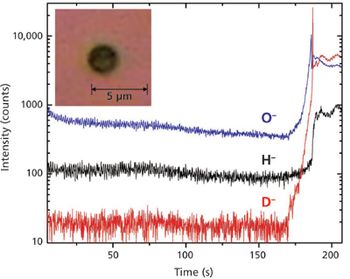
A breakthrough using a microfluidic interface to conduct sensitive time-of-flight secondary ion mass spectrometry (TOF-SIMS) analysis and study liquid surfaces in situ under vacuum conditions is described here.

Consequences of Finite Ion Lifetimes in Mass Spectrometry As we construct more-complex instruments that process packets of ions in time and space, the issue of ion lifetimes is becoming more important.

High-definition screening by gas chromatography–mass spectrometry (GC–MS) is shown to be a viable option for the reliable identification of odorous compounds in pork.

Mass spectrometry is now among the tools used by first responders to identify potential threats, but there are challenges involved, including interpreting results and ensuring data relevance.

This study illustrates the versatility of a laser-induced acoustic desorption (LIAD) approach for volatilization of analytes in modern mass spectrometry.

The combination of GC with time-of-flight (TOF)-MS proves to be a successful approach for the challenging analysis of persistent organic pollutants in complex matrices such as sediment and fish samples.

More-specific, sensitive, rapid, and portable spectroscopic methods detect biological threats.